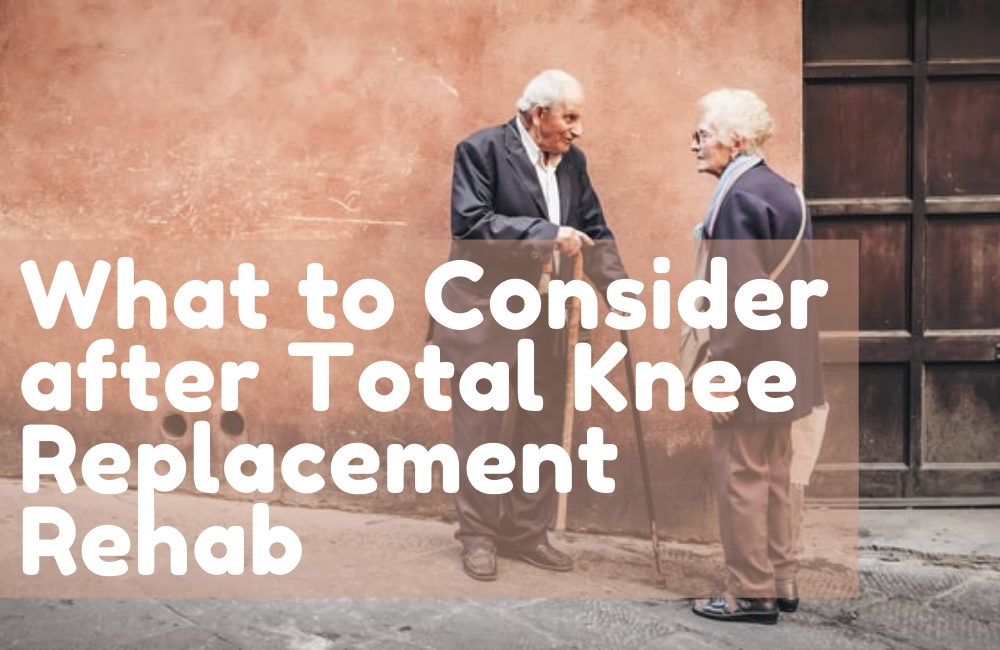There are plenty of orthopedic surgeries that you can undergo in your lifetime, and total knee replacement is one of the most common ones. It is because nearly one-half of the general adult population nationwide will have knee osteoarthritis, forcing them to receive surgery or become permanently handicapped. The good news is most operations end up successful, and patients are strongly recommended to undergo proper rehabilitation to adapt to this drastic change.
If you just underwent a total knee replacement or are getting one soon, knowing what to expect can help you better prepare for the challenges while allowing your body to adapt and become more active as compared to pre-surgery. Consider this article as your guide to have a comprehensive understanding of your needs through the course of the recovery process.
What Should I Expect When I Am Discharged from the Hospital for My Total Leg Replacement Surgery?
Most total knee replacement procedures use a mix of metal and high-grade plastic as replacement parts to restore the worn-out ends of the bones, particularly the ones in your thigh and lower leg. Once your doctor approves you for home care, you move around either using crutches or a walker. For sure, you will still be bandaged up with staples, tissue glue, and tape strips, but you can walk. However, take note that this is a major adjustment, so it is understandable that you may feel weak just after a few steps.
Once arriving home, note the date since you may have to remove the bandage at approximately 10-21 days after the surgery. Some of the adhesive components may also wear off over time, leading them to come undone, so just be mindful of that. You may feel some tingling pain and expect to see some inflammation around the area for 3-6 months. Just ensure that you use your cane or walking equipment until a month or two as your body builds up its strength to walk again and do more intensive physical activities.
In addition, whether you are all better or just slowly recovering, you must get some form of rehabilitation, which should be a gradual progression to restore full mobility. In most cases, older adults have home care services in coordination with their tending physician to oversee the physical therapy, which has resulted in promising results for many patients. It is because most of them are comprised of physiotherapists and other medical professionals licensed to help recuperating individuals like you. Seriously consider this option as well to ensure your well-being through the transition and swift recovery.
How Can I Stay Active and Meet My Leg Replacement Recovery Goals?
As with any surgery, it is about pain mitigation while getting that ample amount of active movement to allow the knee replacement to heal and bond with your musculoskeletal system. It is advisable that you pace yourself since going at it too hard can stress you out and slow down your recovery. On the other hand, failing to exercise can affect your mobility, resulting in poorly developed healing. Instead of using guesswork or gut feeling, it is best to work with home care services or seek professional assistance from a rehab facility to meet your needs and strike the right balance.
Conclusion
Undergoing total knee replacement can help you function better and live a healthier life, and recovering from it is also important as you adjust to the changes. It is just a matter of keeping to recommended guidelines set by your doctor and other healthcare professionals. Meanwhile, if you are concerned that the transition from hospital to home may not be as smooth, consult with experts like us for further assistance.
Bridge Home Health & Hospice provides professional home care services in California through our team of trained clinicians and therapists. We can help you transition from the hospital to your house once you get your total knee rehabilitation and other similar types of major medical treatments. Simply contact us today at (800) 476-0043 or chat with our online representatives to discuss our patient care interventions!

